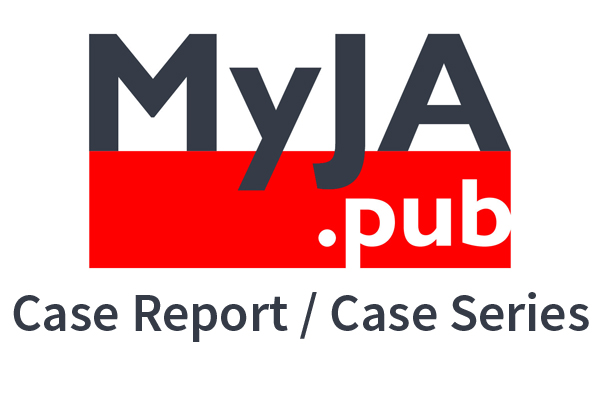Keywords
Abstract
A 31-year-old parturient with body mass index of 52 kg/m2 and subglottic stenosis, complicated with obstructive sleep apnoea and history of cardiac failure presented in labour. With prior multidisciplinary antenatal and anaesthetic assessment and counselling already in place, epidural was started in early labour via combined spinal-epidural (CSE) technique. The epidural was efficacious in providing labour analgesia and later successfully used for extension of anaesthesia for emergency caesarean delivery for failure to progress. Effective postoperative analgesia via multimodal non-opioid strategy enabled early mobilization and breathing exercises to prevent potential complications during the postpartum period. We present a case to highlight the versatility of the CSE technique in providing effective analgesia in various clinical situations, especially in patients with potential disastrous airway. Early multidisciplinary antenatal assessment and planning by obstetric, otorhinolaryngologic, cardiology, and anaesthetic teams facilitated optimal management of this complicated case.
References
Institute for Public Health Malaysia. National Health and Morbidity Survey 2016: Maternal and Child Health (MCH) Volume Two: Maternal and Child Health Findings.
Lamon AM, Habib AS. Managing anaesthesia for caesarean section in obese patients: Current perspectives. Local Reg Anesth. 2016;(9):45-57. https://doi.org/0.2147/LRA.S64279
D’Angelo R, Habib A. Obesity. In: Chestnut DH. Obstetric Anaesthesia: Principles and Practice. 6th ed. Elsevier Mosby; 2020:1190-1202.
Miro M, Guasch E, Gilsanz F. Comparison of epidural analgesia with combined spinal-epidural analgesia for labour: a retrospective study of 6497 cases. Int J Obstet Anesth. 2008;17(1):15-19. https://doi.org/10.1016/j.ijoa.2007.07.003
Dennis AT, Lamb KE, Story D, et al. Associations between maternal size and health outcomes for women undergoing caesarean section: A multicentre prospective observational study (The MUM SIZE Study). BMJ Open. 2017;7(6):e015630. https://doi.org/10.1136/bmjopen-2016-015630
Singh S, Wirth KM, Phelps AL, Badve MH, Shah TH, Sah N, Vallejo MC. Epidural catheter placement in morbidly obese parturients with the use of an epidural depth equation prior to ultrasound visualization. ScientificWorldJournal. 2013 Jul 25;2013:695209. https://doi.org/10.1155/2013/695209
Bauer ME, Kountanis JA, Tsen LC, Greenfield ML, Mhyre JM. Risk factors for failed conversion of labour epidural analgesia to caesarean delivery anaesthesia: A systematic review and meta-analysis of observational trials. Int J Obstet Anesth. 2012;21(4):294-309. https://doi.org/10.1016/j.ijoa.2012.05.007
Carlos AA, Carin AH. Airway Management in the Adults. In: Michael AG, ed. Miller’s Anaesthesia. 9th ed. Elsevier; 2020.
Arroyo-Fernández FJ, Calderón Seoane JE, Torres Morera LM. Strategies of analgesic treatment after caesarean delivery. Current state and new alternatives. Rev Esp Anestesiol Reanim (Engl Ed). 2020;67(3):167-175. https://doi.org/10.1016/j.redar.2019.11.005
Eley VA, Donovan K, Walters E, Brijball R, Eley DS. The effect of antenatal anaesthetic consultation on maternal decision-making, anxiety level and risk perception in obese pregnant women. Int J Obstet Anesth. 2014;23(2):118-124. https://doi.org/10.1016/j.ijoa.2013.10.010







